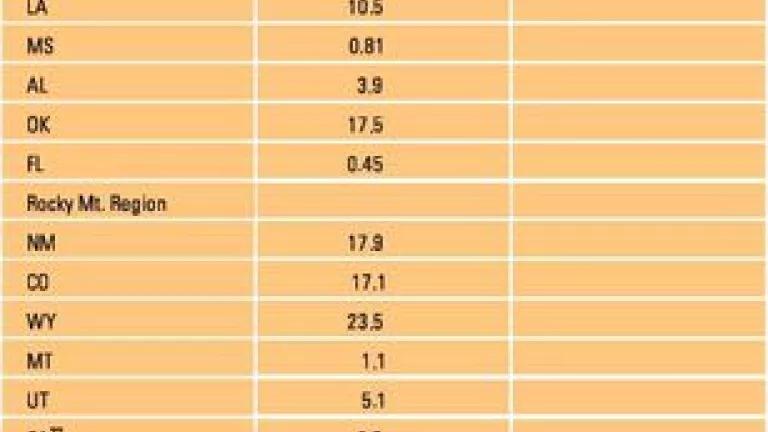
Terrific or terrible — this was the phrase that my nine-year daughter came up with as I pondered last minute changes to the title for the natural gas paper that I had been working on with my colleagues at NRDC for several months. She wanted to go ride bikes that Saturday afternoon and knew if she helped me come up with a title, we would get out the door sooner.
Terrific or terrible — it had a nice ring to it. But it was not quite right for the paper, which addressed challenging questions around the role of natural gas in America’s energy future. Unfortunately, it is not as black and white as my nine-year old hoped. Natural gas is terrific in some ways. First, the United States has a lot of it. Proven reserves — the amount of gas still in the ground that we know is there and can be recovered with current technology and under current economic conditions — equal 211 Trillion cubic feet (Tcf). This is enough gas to meet American natural gas consumption needs for over a decade. Second, burning natural gas for electricity is a lot cleaner than the dirty coal plants that we are still planning to build for power. Estimates suggest that we have at least five times current reserves in undiscovered technically recoverable natural gas.
In other ways, however, natural gas is terrible. While cleaner-burning than other fossil fuels, natural gas still releases dangerous carbon dioxide into the air. In order to prevent dangerous global warming, America must reduce carbon dioxide emissions by 80 percent or more. We cannot do this by continuing to rely on burning fossil fuels for power. Instead, we must look to increased efficiency and renewables to meet our energy needs.
Moreover, drilling can quickly transform a natural habitat into an industrial wasteland. Each field of well pads is accompanied by a dense web of power lines, miles of pipelines and roads, waste pits, compressors and other production facilities. See this gallery of images from Wyoming’s Upper Green River Valley, an area that’s seen extensive natural gas development in recent years.) Drilling for gas also brings dangerous changes underground. In places like Wyoming’s Powder River Basin, each coal bed methane well pumps thousands of gallons of water a day from precious aquifers. People living near oil and gas wells are getting sick. Not simply sick to their stomach from the scars left on the western landscape they love, but sick with burning eyes and painful headaches — symptoms associated with the toxic substances found in oil and gas.
So, terrific or terrible? Turns out natural gas is some of both. My nine year-old deserves affordable energy to heat our home and cook our food. Right now this is natural gas. But she also deserves a future that is secure from catastrophic weather that global warming can cause. She deserves an economy that is secure and robust. She deserves a society that is at peace, rather than one sending its soldiers to foreign lands to protect oil supplies. Natural gas will keep my daughter warm and fed today, but her future will be built on efficiency and renewable energy — not on natural gas.
Read Finding the Balance: The Role of Natural Gas in America’s Energy Future, an NRDC issue paper released in October 2008.
